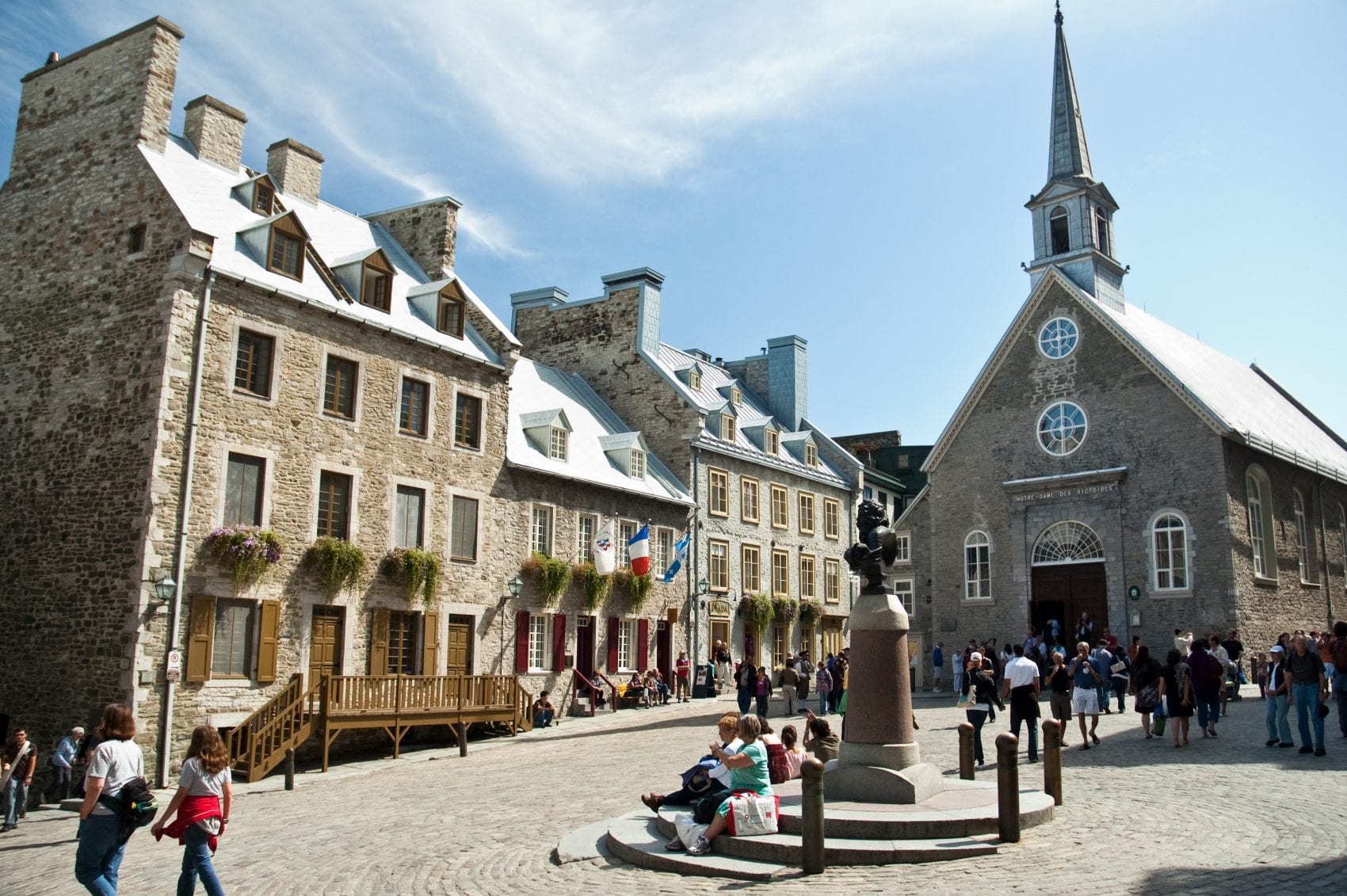Petit-Champlain district, a heritage delight

Visiting Old Quebec’s Petit-Champlain district, nestled at the foot of Cap Diamant, is a must. It has been popular among the public and specialists for years owing to its historic charm and the originality of its nearby shops and businesses. The tasteful way its heritage has been showcased and the lively warmth sensed by visitors as they stroll its narrow pedestrian streets bordered by centuries-old houses ensure that Petit-Champlain will remain an enduring success. Over the seasons, hundreds of thousands of visitors come to pick out an original item, have a bite to eat, enjoy themselves or simply spend some time in the European atmosphere of these few founding streets of Canada.
To learn more…
An enriching experience
The Petit-Champlain district is a mixture of residential and commercial heritage buildings. On the ground floor of the dwellings, 45 restaurants and exclusive shops line Petit‑Champlain, Cul-de-Sac and Sous-le-Fort streets and a section of Champlain Boulevard. The district is nestled in the shadow of Château Frontenac, just a stone’s throw from Place Royale and the St. Lawrence River. The original vocation of this artisans’ neighbourhood is still visible in some boutique-workshops, enriched by niche products manufactured in Quebec and abroad. The district offers an original and quality shopping experience, managed by the Coopérative de solidarité du Quartier Petit-Champlain, which aims to maintain the unique character of this sector of Old Quebec. A small performance hall, a variety of restaurants, a charming little park, rest areas and peaceful terraces round out the district.
In 2011, the Petit-Champlain district earned top honours as part of the Great Places in Canada competition, in the best district category. In 2014, the Rue du Petit-Champlain, on its own, was found to be the most beautiful pedestrian street in the country by the jury of the same competition, and also won the people’s vote, a double honour. Rue du Petit-Champlain is the only street to have won such an honour, thanks to its charm and rich heritage.
A multi-layered history
At the time of New France, the Rue du Petit-Champlain opened out directly onto the banks of the river. A number of artisans in the marine trades lived there: ship’s carpenters, sailors, captains, sailmakers, caulkers and others. They witnessed intense maritime activity right on their doorstep, on the loop road today evoked by the pronounced curve of Boulevard Champlain at the corner of Rue du Cul-de-Sac.
After 1760, under the English Regime, with the development of port facilities and the construction of embankments that made it possible to reclaim space between Cap Diamant and the river, the street became the home of many longshoremen, who included Irish immigrants. Between 1841 and 1889, five rockslides killed dozens of people before the city managed to make the place safe. In the early 20th century, photographs show Rue du Petit‑Champlain as an enclave between Cap Diamant and the new Rue Champlain, built closer to the river. Underdevelopment and poverty were quite visible at the time.
By the 1960s, residents had all but deserted a street forgotten by progress. In the 1970s, renewed interest in historical heritage and the restoration of old districts breathed new life into Rue du Petit-Champlain.
Place Royale and the Petit-Champlain district, two complementary ensembles
The Petit-Champlain district stems from the dream of two visionaries, businessman Gerry Paris and architect Jacques de Blois. In 1977, they started to revitalize the Rue du Petit‑Champlain, which had become totally dilapidated. City authorities had been thinking of razing it completely. The two men wanted to renovate the street while preserving the vestiges of its historical evolution, a revolutionary concept at the time, in order to create a living environment where artists and artisans would live, work and earn a living. The project gradually gained momentum and eventually received support from the Government of Quebec. It concluded with the acquisition of 27 buildings renovated by the Coopérative de solidarité du Quartier Petit-Champlain in 1985.
Restoring an historical district was in contrast with the thinking behind the restoration of Place Royale, where the old space was completely built from scratch from a few original plans. In the Petit-Champlain district, respect for existing heritage, including its successive transformations, turned it into an exceptionally warm and vibrant neighbourhood. Today, these two adjacent sections of Old Quebec complement each other harmoniously, evoking the diversity of Quebec’s historical roots.





